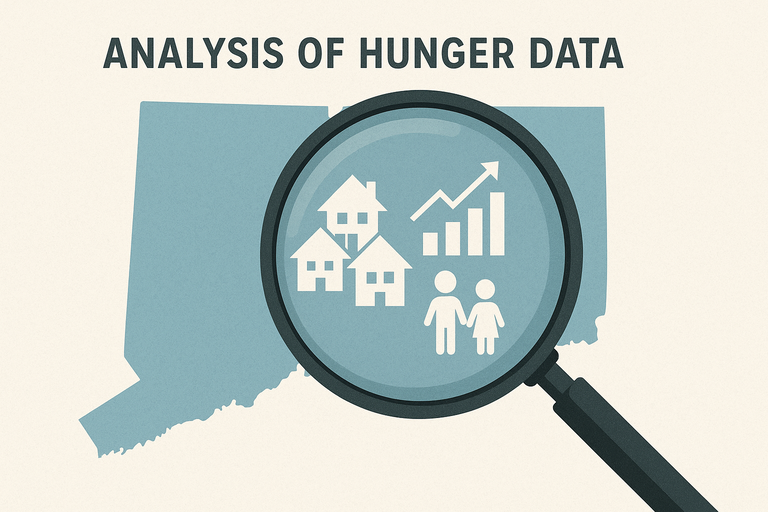When the Numbers Disappear: Why Ending the USDA’s Household Food Security Report Matters…
For nearly three decades, the U.S. Department of Agriculture’s Household Food Security Report served as the gold standard for tracking hunger in America. Each year, the report provided a national snapshot—how many people were struggling with food insecurity, which communities were most affected, and whether policy interventions were working.
But in September 2025, the USDA announced it would end publication of the Household Food Security Report. The decision shocked hunger-relief organizations and data advocates alike. Without this consistent national measure, understanding—and solving—hunger in America becomes far more difficult.
Why the Report Mattered
The Household Food Security Report wasn’t just another government document. It was the data backbone for policymakers, researchers, and nonprofits. It told us how many households skipped meals, which regions faced the most hardship, and how trends shifted with economic changes.
When the COVID-19 pandemic hit, for example, that report helped show the impact of federal relief programs and pandemic EBT benefits. When inflation drove up grocery prices, it quantified how those costs affected families’ ability to buy nutritious food.
Now, without it, organizations lose the only nationwide, standardized measurement of food insecurity—making it harder to see whether hunger is getting better or worse.
The Risks of Losing Accurate Hunger Data
Ending this report doesn’t just erase statistics—it clouds accountability. Without reliable, comparable data:
Lawmakers lose visibility into the true scope of food insecurity, making it easier to downplay need or reduce funding.
Researchers lose consistency, which undermines decades of trend tracking and analysis.
Communities lose insight into where hunger is growing fastest—and what interventions work.
Families lose voice, because without hard numbers, their struggles become easier to overlook.
One national advocacy group described it bluntly: without this data, “policymakers cannot know who needs help, or where to invest resources.”
Connecticut Foodshare Steps Up to Fill the Gap
In response, Connecticut Foodshare announced that it will continue collecting and publishing hunger data for the state—filling the gap left by the USDA’s withdrawal.
“While this decision is a major blow to tracking food-insecurity data nationally, Connecticut Foodshare remains committed to collecting and publishing as much data as possible about the state of hunger in Connecticut,” the organization said in a public statement.
Through its Data & Impact Team, Connecticut Foodshare plans to track state-level food insecurity, meal gaps, child hunger rates, and program participation data—ensuring that policymakers and advocates can still make informed decisions.
What Data Policymakers Need
To design effective food-security policy, leaders need more than general numbers—they need specific, localized, transparent data that capture:
Meal Gap Data
Measures how many meals are missing between what families can afford and what they need. This reveals the total “hunger shortfall” in a community.Child Hunger Metrics
Shows how many children experience food insecurity, and in which districts. Child data often predicts long-term outcomes in education and health.Eligibility and Program Access
Tracks how many households qualify for programs like SNAP or school meals versus how many actually receive them—identifying barriers to enrollment.Geographic and Demographic Trends
Pinpoints regional inequities and helps direct resources to high-need areas, from urban centers to rural communities.Impact Over Time
Longitudinal data helps evaluate whether policy changes, funding cuts, or community programs are making a measurable difference.
When federal data disappears, state and local partners must step in to ensure these insights remain available to the public.
Why Data Transparency Matters
Without visibility, hunger becomes invisible. Transparent data keeps governments accountable and helps direct public dollars where they’re needed most. It also builds public trust—allowing residents, donors, and legislators to see what’s working, what isn’t, and how their efforts make an impact.
When organizations like Connecticut Foodshare commit to sharing data openly, they aren’t just reporting—they’re leading. Reliable information helps attract funding, strengthen advocacy, and inspire smart collaboration between public and private sectors.
How the Community Can Support Data-Driven Solutions
Here’s how individuals, local businesses, and community groups can help ensure accurate hunger data continues to guide action:
Support organizations that prioritize transparency.
Donate or volunteer with nonprofits that publish public reports, hunger maps, or data dashboards. Transparency helps everyone see the bigger picture.Advocate for public funding of research.
Contact state legislators and encourage them to fund food-security data collection at the state level. Reliable data requires consistent investment.Use and share the data.
When Connecticut Foodshare or other organizations publish reports, share them with your networks, schools, and local officials. Awareness amplifies impact.Ask for evidence.
When new programs are announced, ask how success will be measured. Data-driven accountability keeps efforts on track.Support cross-sector collaboration.
Encourage partnerships between universities, food banks, health systems, and local governments to combine data sources for more powerful insights.
Closing Thoughts
Ending the USDA’s Household Food Security Report doesn’t make hunger go away—it just makes it harder to see. Accurate, transparent data are the foundation for any solution that works.
Connecticut Foodshare’s decision to continue collecting and sharing hunger data is more than admirable—it’s essential. In an era where information gaps can become policy gaps, the path forward depends on facts.
If we want to solve hunger, we must first commit to measuring it honestly. Support the organizations that keep that promise alive.
Sources
Connecticut Foodshare — Connecticut Foodshare Ready to Fill the Research Gap Left by USDA, September 2025.
Food Research & Action Center (FRAC) — Ending USDA’s Food Security Report Hides the Reality of Families Struggling to Put Food on the Table, October 2025.
Harvard T.H. Chan School of Public Health — Cancellation of Food Insecurity Survey a Blow to Understanding Hunger in U.S., October 2025.
Reuters — Trump Administration Cancels USDA’s Annual Food Insecurity Survey, September 2025.
Washington Post — USDA Ends Annual Report on U.S. Hunger Amid Rising Food Insecurity, September 2025.
Food and Wine — For 30 Years, This Report Tracked Who Goes Hungry in America — the USDA Just Shut It Down, September 2025.

